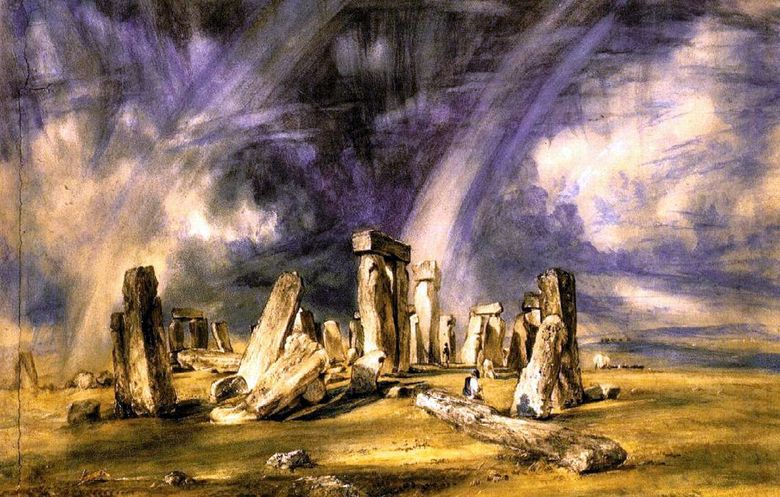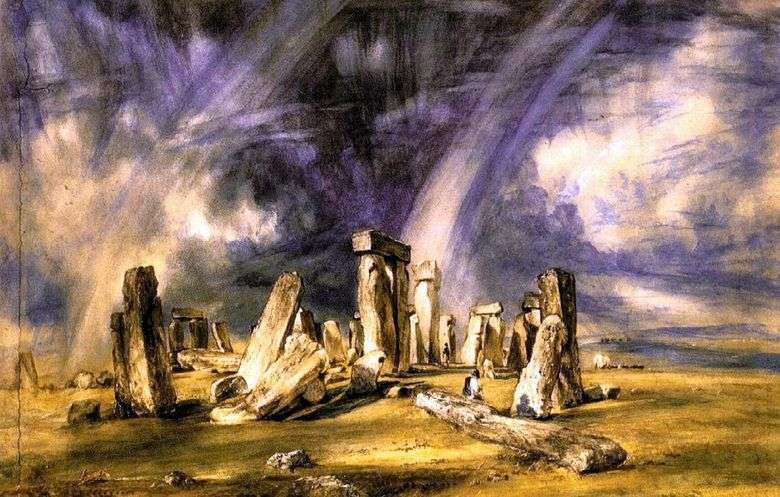
At the end of the 1820s, the painter’s creativity comes with a serious turning point. After the death of his wife, which followed in 1828, melancholy and even tragic notes begin to sound more and more in his art. The epic calm and majesty of the compositions is replaced by romantic excitement.
Now Constable often writes deaf thickets of old farms, trees, with thick logs, driven by strong gusts of wind, ragged clouds, a stormy sky, finally, medieval and primeval ruins.
In his paintings, the romance poets are more and more in touch with the images of nature. In the chosen motive, inner strength and free freedom are increasingly felt. The artist’s picturesque manner becomes more expressive. He works a big spot of color, sometimes puts paint on the canvas palette knife.
 Hadley Castle by John Constable
Hadley Castle by John Constable Old Sarum by John Constable
Old Sarum by John Constable Stonehenge – John Constable
Stonehenge – John Constable Wywenhou Park by John Constable
Wywenhou Park by John Constable Stonehenge – John Constable
Stonehenge – John Constable Cirrhous clouds by John Constable
Cirrhous clouds by John Constable Suzanne Lloyd by John Constable
Suzanne Lloyd by John Constable White Horse by John Constable
White Horse by John Constable